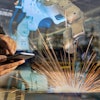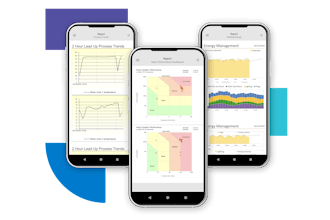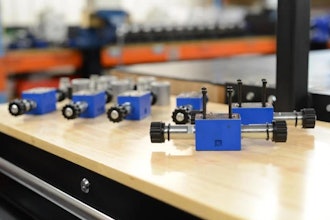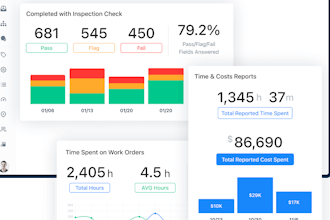
Over the past few years, some Original Equipment Manufacturers (OEMs) have begun using the Industrial IoT (IIoT) to deploy remote monitoring, predictive maintenance, equipment-as-a-service (EaaS), and other types of new Industry 4.0 applications. These applications have allowed these companies to converge their industrial equipment’s OT systems with their IT systems, creating “smart” air compressors, bio-waste collectors, liquid fertilizer storage tanks, energy storage systems, and other types of industrial equipment.
With this new smart industrial equipment these companies have transformed the way they do businesses, using their equipment OT system data to lower equipment downtime, reduce maintenance costs, and launch new revenue generating services.
However, the vast majority of OEMs have yet to participate in this Industry 4.0 revolution.
The reason? The IIoT is complex. In particular, only recently have companies had difficulties in acquiring all the expertise in edge devices, embedded software, wireless connectivity, cloud software, equipment communications protocols, IoT cybersecurity, and other complex subjects that they need to converge their equipment’s OT systems with their IT systems, and make their equipment smart.
However, new solutions are now available that simplify the IIoT, allowing it to cross the chasm separating early adopters from the majority of OEMs. Thanks to new cloud, data orchestration, and other technologies, as well innovative integrations of these technologies with wireless services, these new solutions enable manufacturing companies to quickly and easily converge their OT systems with their IT systems.
Two new solutions in particular – cloud-based IoT application platforms and edge-to-cloud infrastructure solutions – abstract away most of the complexity involved in building, deploying, maintaining, and updating Industry 4.0 applications.
Extending and Simplifying The Cloud
The cloud has radically changed the manufacturing industry. With the cloud, OEMs can now outsource to cloud service providers most of the complex work involved in purchasing, managing, scaling, and securing the computing infrastructure needed to run their IT applications. Rather than building and maintaining their own data center or other on-premises infrastructure, OEMs can simply build and run IT applications on Microsoft Azure, AWS, or other cloud-based application platforms.
Both major cloud service providers (like Microsoft with Azure IoT Central) and smaller application enablement platform companies (like Losant with its Losant Enterprise IoT Platform) have added to their platforms data lake, workflow engine, visualization and other capabilities that companies need to build IIoT applications. With these fully managed, cloud-based IoT application platforms, OEMs can use the same programming skills they use for their IT applications to develop and manage Industry 4.0 applications that connect to, monitor, and control their industrial assets.
Cloud-based IoT application platforms increasingly make it possible for OEMs to develop Industry 4.0 applications using the same cloud development skills they use for other IT applications. However, they do not provide these companies with the edge-to-cloud infrastructure they need to extract data from industrial equipment with modules, routers and other IoT edge devices and then securely and efficiently orchestrate this data’s transmission to the cloud.
Until recently, OEMs needed expertise in a variety of industrial equipment communications protocols if they wanted to build this infrastructure. In addition, they had to:
- Set-up and manage the wireless connectivity services needed to transmit this data from edge devices to the cloud.
- Write APIs in order to integrate this data into the cloud.
- Implement an IoT security plan that would protect their data from malicious actors from the moment it was generated at the edge, to the point where it was ingested by the cloud.
Fortunately, new edge-to-cloud infrastructure solutions have emerged that embed all of these capabilities into their solutions, eliminating the need for these companies to acquire the expertise needed to build out these capabilities themselves. For example, many of these solutions include the communications protocols that edge devices need to extract data from industrial equipment.
They include global connectivity services that allow these devices to automatically connect to cellular wireless networks around the world and have cloud APIs that make it easy for OEMs to integrate their equipment data into cloud-based IoT application platforms.
In addition, these solutions often include distributed processing and data orchestration technologies that enable manufacturing companies to automate the delivery of security patches to their edge devices. Many of these data orchestration technologies also enable capabilities beyond security.
For example, they help OEMs optimize the transmission of data from their edge devices to the cloud, allowing them to reduce their data transmission costs and lower the amount of energy used by battery-powered edge devices. They also enable them to update their edge devices’ application rules as their business needs change.
The Transformation
Together, edge-to-cloud infrastructure solutions and cloud-based IoT application platforms are eliminating the need for OEMs to acquire all the complex IIoT expertise required to converge their OT systems to their IT systems.
Using these solutions, manufacturing companies with little to no experience with the IoT can now create remote monitoring applications that alert them if their equipment’s operating data indicates it might soon break down – and then fix the equipment remotely before sending a technician to adjust it.
They can visualize their equipment data, allowing them to evaluate its performance over time. They can track how much customers are using their equipment, allowing them to launch new pay-as-you-go services that reduce their customers up-front capital expenses while also creating new long-term revenue streams for them. In addition, they can transmit equipment data to their ERP, CRM, billing, and other IT applications, where it can be used to further automate operations or generate valuable insights.
As edge-to-cloud infrastructure solutions and cloud-based IoT application platforms increasingly enable a more simplified IIoT to cross the chasm separating early adopters from other OEMs, expect to see many more manufacturing companies deploying Industry 4.0 applications. And by using these IIoT applications to automate manual, error-prone processes, generate insights that improve their decision making, and offer new services to their customers, these companies will transform their businesses – as well as the global economy.
Olivier Pauzet is Vice President of Product & IoT Solutions at Sierra Wireless.






















